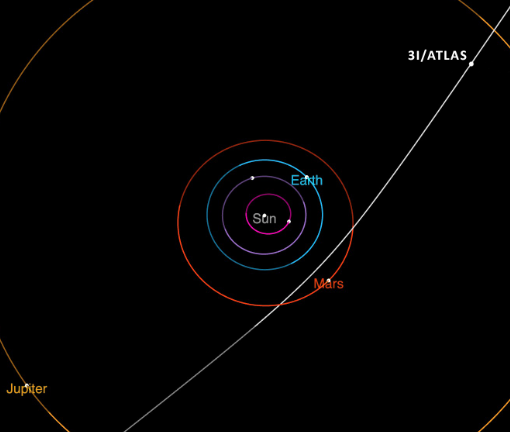Unveiling 3I ATLAS: The Interstellar Comet
Discover 3I/ATLAS, a comet from beyond our solar system. Learn about its discovery, unique behavior, and what it teaches us about other star systems.
The universe is a vast and mysterious place, and every so often, a celestial visitor from a distant corner of the galaxy passes through our cosmic neighborhood. The latest of these rare guests is the interstellar comet 3I/ATLAS. Its discovery marks a significant event in astronomy, providing a unique opportunity to study an object that has traveled for billions of years through interstellar space.
A New Chapter in Interstellar ExplorationThe comet, officially designated 3I/ATLAS, gets its name from the Asteroid Terrestrial-impact Last Alert System (ATLAS) in Chile, which first detected it. The "3I" signifies that this is only the third confirmed interstellar object to be observed passing through our solar system, following the famous 'Oumuamua and 2I/Borisov.
What makes this discovery so compelling is the chance to study an object with a trajectory that proves it originated from another star system. Unlike objects in our solar system that are bound by the sun's gravity, 3I/ATLAS is on an "unbound" hyperbolic path, traveling at an incredible speed. This trajectory confirms it is just a temporary visitor, passing through before continuing its journey into the depths of space.
The Mysteries of a Cosmic WandererInitial observations of 3I/ATLAS have already revealed some intriguing characteristics. While its icy core remains hidden within a cloud of dust and gas, known as a coma, its behavior has captured the attention of astronomers. Telescopes have captured images of this celestial body, showing a dust plume and the early formation of a tail.
However, some aspects of its behavior are puzzling. The comet's dust-loss rate appears comparable to that of native solar system comets, suggesting it behaves in a similar fashion despite its different origin. This similarity could offer clues about the formation of planetary systems across the galaxy and hint at shared physical characteristics. Scientists are eager to analyze its chemical composition to see if it holds any surprises.
The Future of Interstellar Object HuntingThe discovery of 3I/ATLAS underscores the transformative power of modern astronomical surveys. With new, powerful observatories coming online, the detection of such objects is becoming more frequent. These advanced telescopes are not just finding more interstellar objects, but also providing a wealth of data that allows for detailed analysis of their orbits, physical properties, and composition.
As 3I/ATLAS continues its journey, passing closest to the sun in the coming months, astronomers will be using a host of instruments to gather as much information as possible. Although it will not be visible to the unaided eye, its passage represents a critical moment for science. Each new interstellar visitor provides a piece of a cosmic puzzle, helping us understand the diversity and evolution of planetary systems beyond our own. The age of interstellar object detection is here, and 3I/ATLAS is a shining example of what we can learn from these magnificent travelers.
Unveiling 3I ATLAS: The Interstellar Comet
